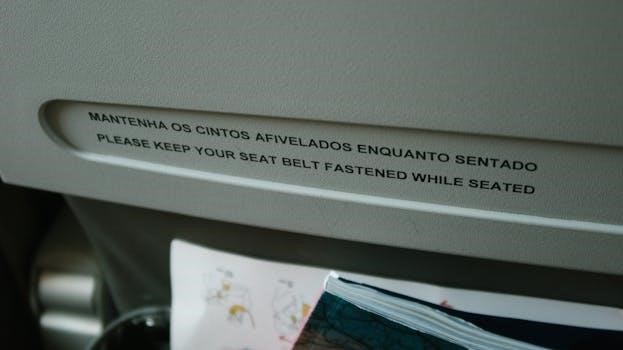

This comprehensive guide serves as your portal to mastering the Nikon D610. It offers detailed instructions, insights, and resources for maximizing your camera’s potential. From understanding basic controls to advanced techniques, this manual will help you navigate every feature. Unlock the full power of your D610 with this essential resource.

Welcome to your comprehensive guide to the Nikon D610, a powerful DSLR camera that offers exceptional image quality and versatility. This manual is designed to help you, whether you’re a beginner or an experienced photographer, to fully understand and utilize all the features and capabilities of your D610. Within these pages, you will find clear, step-by-step instructions and explanations of the camera’s various settings, menus, and modes. The aim is to empower you to take control of your photography, enabling you to capture stunning images with confidence and precision. This manual includes information from various sources, including the official Nikon user manual, to provide a complete resource. It will guide you through everything from the initial setup to advanced shooting techniques. This manual also covers essential topics such as understanding exposure, autofocus, and white balance, as well as how to effectively utilize the D610’s custom settings and lens compatibility. Additionally, we will delve into troubleshooting common issues and ensure your D610 performs at its best. By the end of this guide, you’ll be well-equipped to unleash your creative potential and produce breathtaking photos with your Nikon D610. So, let’s begin your journey towards photographic mastery.
D610 Manual⁚ Key Features and Controls
The Nikon D610 is packed with features and controls that allow photographers to capture stunning images in a variety of shooting situations. This section of the manual will guide you through the key elements of the camera, ensuring you understand how to utilize them effectively. Starting with the external controls, you will learn about the placement and function of the command dials, which are essential for adjusting aperture, shutter speed, and other settings. The mode dial allows you to switch between different shooting modes such as aperture-priority, shutter-priority, manual, and automatic. We’ll explore the various buttons on the camera body, including the ISO button, the exposure compensation button, and the menu button, explaining their specific functions. The manual also covers the camera’s LCD screen, which provides real-time information and allows you to review your photos. We’ll discuss the navigation buttons for accessing and adjusting the menu options. Furthermore, we will delve into the internal workings of the D610, including its full-frame sensor, autofocus system, and metering modes. Understanding these core components is crucial for maximizing your photographic potential. This section will provide a comprehensive overview of the D610’s key features and controls, ensuring you’re comfortable handling your camera and ready to capture exceptional images.
Understanding the D610 Camera Menus
Navigating the Nikon D610’s menu system is essential for customizing your camera settings to suit your specific needs. This section of the manual will provide a detailed walkthrough of the various menu options, helping you understand their functions and how to use them effectively. The camera menu is divided into several sections, each dedicated to different aspects of the camera’s operation. We will begin with the playback menu, where you can review, delete, and protect your images. The shooting menu is where you will find settings related to image quality, ISO, white balance, and other crucial parameters. Then, the custom settings menu offers a wide array of options for fine-tuning the camera to your preferences, such as adjusting autofocus behavior, customizing button functions, and setting up bracketing options. The setup menu contains settings for general camera functions, including time, date, language, and LCD brightness. We will also discuss the retouch menu, which provides in-camera image editing tools. The recent settings menu, which allows you to quickly access your most frequently used settings. Understanding each menu section and its contents will enable you to optimize your camera’s performance and take full control of your creative vision. This will empower you to tailor the D610 to your unique shooting style.

First Steps with Your Nikon D610
Embarking on your photography journey with the Nikon D610 begins with a few crucial initial steps. This section guides you through the process of setting up your camera for the first time. Firstly, you will need to insert a fully charged battery into the designated compartment. Ensure the battery is securely placed before proceeding. Next, insert an SD memory card into the appropriate slot, which will serve as your storage medium for photos and videos. Once these are in place, power on your D610 using the on/off switch. The camera will prompt you to set the date, time, and language. These settings are important for proper file management and organization. It is also advisable to familiarize yourself with the basic camera controls, such as the mode dial, command dials, and the various buttons. Before you start shooting, it is recommended to attach a lens. This guide will help you understand how to mount a Nikon lens to the D610 correctly and safely. Familiarizing yourself with the view finder and the LCD screen is also vital for composing your shots. These initial steps are essential for setting a firm foundation for using your camera effectively. These first steps will ensure that you are able to capture your first photograph without issues. These steps are the basis for all other steps.
Exposure and Focus Modes on the D610
Understanding exposure and focus modes is crucial for capturing well-composed and sharp images with your Nikon D610. Exposure modes control how the camera determines the brightness of your photos, and the D610 offers a range of options. These include Program (P), Aperture Priority (A), Shutter Priority (S), and Manual (M) modes. In Program mode, the camera sets both the aperture and shutter speed automatically. Aperture Priority allows you to set the aperture, controlling depth of field, while the camera adjusts the shutter speed. Shutter Priority lets you set the shutter speed, controlling motion blur, while the camera chooses the aperture. Manual mode grants you full control over both aperture and shutter speed. Focus modes determine how your camera focuses on your subject. The D610 offers autofocus (AF) and manual focus (MF) options. Within autofocus, you have single-servo AF (AF-S) for stationary subjects, continuous-servo AF (AF-C) for moving subjects, and auto-servo AF (AF-A), which switches between AF-S and AF-C as needed. You also have different AF-area modes, allowing you to select a single focus point, use a dynamic area for tracking, or use automatic area selection. Mastering these exposure and focus modes will greatly enhance your ability to capture the images you envision. These options provide the necessary flexibility for any situation. Using them correctly will help you take better pictures.
Using Nikon Lenses with the D610
The Nikon D610 is compatible with a wide range of Nikon lenses, offering flexibility for various photographic styles. The camera supports both FX and DX format lenses. FX lenses are designed for full-frame sensors like the D610’s, providing the full field of view. DX lenses are designed for smaller sensors, but can still be used on the D610, though with a cropped image area. When using a DX lens, the camera can automatically engage a DX crop mode, reducing the image size but maintaining sharpness. It’s crucial to understand the lens mount and compatibility to ensure proper function. The D610 utilizes the Nikon F-mount, which has been around for decades, thus it’s compatible with a vast array of both new and vintage lenses. When mounting a lens, align the mounting index on the lens with the corresponding index on the camera body and twist until it clicks into place; Ensure the lens is securely attached before use. Pay attention to the lens’s focal length, aperture, and focusing capabilities to take full advantage of its features. Each lens offers unique characteristics, so experiment to find what works best for your specific needs. Consider factors such as image stabilization, and focusing speed when choosing your lenses. Using the appropriate lens is crucial for achieving the desired results.
Resetting the Nikon D610 to Factory Settings
Resetting your Nikon D610 to its factory settings can be a useful troubleshooting step or when preparing to sell or pass on the camera. This action will revert all custom settings, including exposure modes, focus settings, image quality preferences, and menu customizations, back to their original default values. To begin, access the camera’s menu system. Navigate to the ‘Custom Settings Menu’, which is usually represented by a pencil icon. Within this menu, you’ll find the option labeled ‘Reset custom settings’. Select this option, and the camera will prompt you to confirm your decision. By confirming, you are instructing the camera to erase all the personalized settings you’ve made. Be aware that this process will not erase the images on your memory card. However, it will impact your camera’s behavior and preferences, so make sure you are ready to reset; It’s always a good idea to take note of your most important custom settings before performing a reset, so you can easily re-apply them if needed. Once the reset is complete, your D610 will function as it did when it first came out of the box. This can be a very effective way to resolve certain issues, especially if you’re unsure of the source of the problem. Resetting to default is a simple but powerful way to start fresh with your camera.

Updating the D610 Firmware
Keeping your Nikon D610’s firmware up to date is crucial for optimal performance and access to new features or bug fixes. The firmware is essentially the operating system of your camera, and Nikon occasionally releases updates to improve its functionality. To update the firmware, first, you’ll need to visit the official Nikon support website. Locate the download section for the D610 and download the latest firmware file to your computer. Ensure you download the correct firmware version for your camera model. Once downloaded, copy the firmware file onto a formatted SD card. It’s recommended to use a fully charged battery and a reliable memory card. Insert the SD card with the firmware into your camera. Power on your D610 and navigate to the ‘Setup’ menu. Look for the ‘Firmware version’ option. Selecting this option will start the update process. Follow the on-screen instructions carefully. The camera will guide you through the steps. During the update, do not switch off the camera or remove the battery or the memory card. A power failure may cause serious damage to the camera. Once the update is complete, the camera will restart. It’s a good idea to verify that the firmware update was successful by checking the firmware version again in the menu. Keeping your firmware up-to-date is a simple way to keep your D610 running smoothly and efficiently.
Troubleshooting Common D610 Issues
Encountering issues with your Nikon D610 can be frustrating, but most problems can be resolved with basic troubleshooting steps. One common issue is the camera not turning on. First, ensure the battery is fully charged and correctly inserted. Try using a different, known-good battery to rule out battery issues. Inspect the battery compartment for any signs of corrosion or damage. Another common problem is the camera displaying error messages. Consult the D610’s user manual to identify the specific error code. Sometimes, simply restarting the camera can resolve the issue. If the camera is not focusing correctly, check the lens for dirt or damage and try cleaning it. Ensure the focus mode is set appropriately for your shooting situation. If images appear blurry, verify that the lens is properly attached and clean. Also, check your shutter speed and ISO settings. If the camera is not saving photos to the memory card, confirm that the card is properly inserted and not write-protected. Try formatting the card in the camera menu. If issues persist, check the firmware is up-to-date. If you continue to experience problems, reach out to Nikon’s customer support or a certified repair center for help; Addressing these issues methodically will often get your D610 back to its optimal working condition.